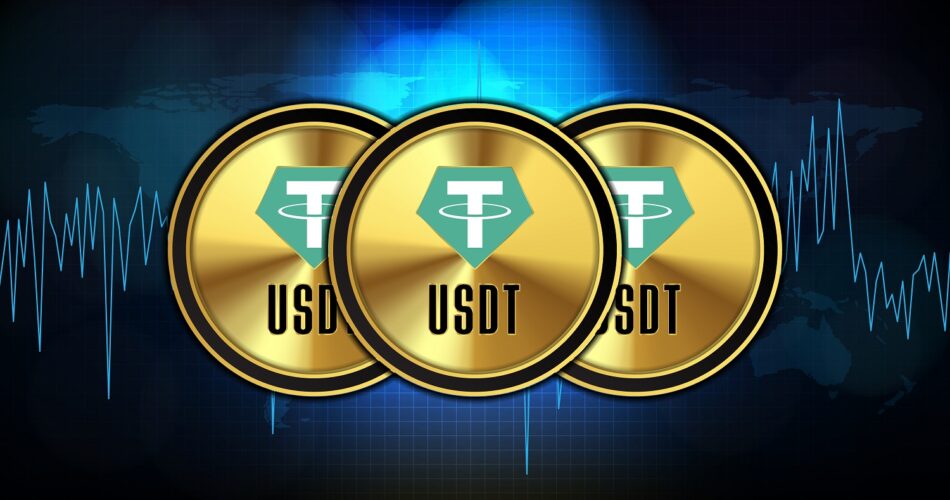In the ever-evolving landscape of cryptocurrencies, one term that has captured significant attention is “stablecoin”. As the name suggests, stablecoins offer stability in a market known for its volatility. But what exactly are stable coins, and why are they considered a game-changer in the crypto world? Let’s delve into the details.
Table of Contents
What are Stablecoins?
Stablecoins are a unique type of cryptocurrency designed to offer price stability and are backed by a reserve of assets. The concept of stable coins was introduced to tackle the inherent volatility seen in cryptocurrency prices. This volatility can be a significant barrier to the adoption and practical everyday use of cryptocurrencies, as people require a medium of exchange that will retain its value over time.
Understanding Stablecoins
The term “stablecoin” comes from the stability these coins aim to achieve. Unlike other cryptocurrencies like Bitcoin or Ethereum, whose prices can fluctuate dramatically in short periods, stable coins aim to maintain their value over time. This stability is typically achieved by pegging the stablecoin’s value to a reserve of assets.
These reserves can include fiat currencies like the US Dollar, Euro, or commodities like gold. For example, if a stable coin is pegged to the US dollar, the entity issuing the stablecoin will hold a reserve of dollars that back up the value of the coins in circulation. This means that for every coin issued, there is an equivalent amount of real-world assets held in reserve, which can be exchanged for each coin if necessary. This mechanism of backing gives users confidence that the stablecoin can be redeemed for its underlying asset, thereby maintaining its value.
However, not all stablecoins are backed by fiat currency. Some are backed by other cryptocurrencies (crypto-collateralized stable coins) or not backed by any reserve but use algorithms to maintain price stability (non-collateralized or algorithmic stablecoins).
Stablecoins play a crucial role in the cryptocurrency ecosystem. They offer a bridge between the world of traditional finance and cryptocurrencies, providing a way to transact in a decentralized manner without the volatility typically associated with cryptocurrencies. They are used for a variety of purposes, including as a means of exchange, a way to store value, and a unit of account.
Types of Stablecoins
| Type | Backing | Stability Mechanism | Examples |
|---|---|---|---|
| Fiat-Collateralized | Fiat currencies or commodities | Backed one-to-one by reserves | Tether (USDT), USD Coin (USDC) |
| Crypto-Collateralized | Other cryptocurrencies | Over-collateralization to absorb price fluctuations | Dai (DAI) |
| Non-Collateralized (Algorithmic) | None | Algorithms and smart contracts adjust supply | Ampleforth (AMPL) |
| Hybrid | Combination of fiat, crypto, and algorithmic | Uses a mix of methods for stability | Reserve Rights (RSR) |
Fiat-Collateralized
These are the most common type of stable coins. They are backed one-to-one by fiat currencies like the US Dollar, Euro, or other assets like gold. The reserves are held by a central entity and can be audited regularly to ensure transparency. The value of these stablecoins remains stable unless there’s a significant change in the value of the underlying asset.
Advantages
- Stability: Since they’re backed by stable fiat currencies, they’re less volatile compared to other cryptocurrencies.
- Trust: Regular audits of the reserves provide a level of trust and transparency.
- Easy to Understand: The concept is straightforward, making it easier for traditional investors to understand and adopt.
Disadvantages
- Centralization: The need for a central entity to hold reserves goes against the decentralized ethos of cryptocurrencies.
- Regulatory Risk: These stablecoins are subject to regulations of the jurisdiction where the reserves are held.
- Redemption Risk: There’s a risk that the issuer might not be able to redeem the stablecoin for the underlying asset.
Crypto-Collateralized
These stablecoins are backed by other cryptocurrencies. Given the volatile nature of cryptocurrencies, these stablecoins are often over-collateralized, meaning the value of the collateral is more than the value of the stablecoins issued. This over-collateralization ensures that the stablecoin maintains its peg even if the value of the collateral fluctuates.
Advantages
- Decentralization: These stablecoins operate in a decentralized manner, aligning with the ethos of cryptocurrencies.
- Transparency: The use of smart contracts ensures transparency in the issuance of these stable coins.
Disadvantages
- Complexity: The over-collateralization concept can be complex to understand for new users.
- Volatility Risk: The collateral is subject to crypto market volatility, which can pose risks if the market drops significantly.
Non-Collateralized (Algorithmic Stable coins)
These stablecoins are not backed by any reserve. Instead, they use algorithms and smart contracts to maintain price stability. These algorithms automatically adjust the supply of the stablecoin in response to changes in demand to keep the price stable.
Advantages
- Decentralization: These stablecoins are fully decentralized with no need for collateral.
- Scalability: They can be scaled up easily as there’s no need for reserves.
Disadvantages
- Complexity: The algorithmic approach can be complex and difficult to understand for many users.
- Stability Risk: Maintaining stability can be challenging during extreme market conditions.
Hybrid
These stablecoins combine elements of the above types to create a more balanced and resilient stablecoin. They might use a combination of fiat, crypto assets, and algorithmic methods to maintain stability.
Advantages
- Resilience: By combining different methods, these stable coins aim to be more resilient to market changes.
- Flexibility: They can adapt their approach based on market conditions and needs.
Disadvantages
- Complexity: The hybrid approach can be complex to understand.
- Potential for Centralization: Depending on the model, there could be elements of centralization.
Popular Stablecoins in the Market
| Stablecoin | Market Capitalization | Backed By | Description |
|---|---|---|---|
| Tether (USDT) | $83,688,957,534 | USD | Most widely used stablecoin, used as a digital substitute for USD in many cryptocurrency exchanges. |
| USD Coin (USDC) | $27,031,247,278 | USD | Managed by a consortium called Centre, which includes members like Circle and Coinbase. |
| Dai (DAI) | $4,258,637,187 | Ethereum | A crypto-collateralized stablecoin maintained by the MakerDAO system. |
| Binance USD (BUSD) | $3,921,556,896 | USD | A stablecoin issued by the Binance exchange. |
| TrueUSD (TUSD) | $2,838,746,816 | USD | A stablecoin that is fully collateralized by USD. |
| Frax (FRAX) | $1,003,060,940 | USD and Frax Shares (FXS) | A fractional-algorithmic stablecoin that maintains its peg through a combination of collateral and algorithmic mechanisms. |
| USDD (USDD) | $731,154,727 | USD | A stablecoin pegged to the US dollar. |
Please note that the market capitalization values are subject to change as they are influenced by trading activities. The “Backed By” column indicates the asset or mechanism that the stablecoin uses to maintain its value.
Stablecoin Price
The price of a stablecoin is designed to be as stable as possible, typically pegged to a specific value. Most commonly, this is a 1:1 peg with a certain fiat currency, such as the US dollar. This means that one unit of the stablecoin should always be equivalent to one unit of the pegged currency. For example, one Tether (USDT) or one USD Coin (USDC) is designed to always be worth one US dollar.
The stablecoin issuer maintains this peg through a variety of mechanisms. For fiat-collateralized stablecoins, the issuer holds reserves of the pegged currency in a bank or other trusted third party. For every stablecoin issued, there is an equivalent amount of fiat currency held in reserve. This reserve can be audited to ensure that the number of stablecoins in circulation is fully backed.
Crypto-collateralized stablecoins, on the other hand, are backed by other cryptocurrencies. These stablecoins are often over-collateralized to account for the volatility of the backing cryptocurrency. For example, a stablecoin might be backed by $150 worth of Ethereum for every $100 stablecoin issued. This over-collateralization ensures that the stablecoin maintains its peg even if the value of the collateral fluctuates.
Algorithmic stablecoins maintain their peg through software algorithms that automatically adjust the supply of the stablecoin in response to changes in demand. If the price of the stablecoin goes above the peg, the algorithm will increase the supply to bring the price down. If the price goes below the peg, the algorithm will decrease the supply to bring the price up.
Terra Luna Stablecoin Crash

Terra, the company behind the TerraUSD stablecoin, faced significant controversy and legal issues when their stablecoin experienced a major drop. The company and its CEO, Do Kwon, were charged with multi-billion dollar fraud by the SEC. The allegations stated that the Terraform ecosystem was not truly decentralized and was instead a fraud propped up by the so-called algorithmic “stablecoin”. The price of this stablecoin was allegedly controlled by the defendants, not by any code as claimed.
The TerraUSD stablecoin, also known as UST, was supposed to maintain its peg to the dollar through an algorithm and trading in a sister token called Luna. However, the stablecoin failed to maintain its peg, leading to significant losses for investors.
Do Kwon was subsequently arrested in Montenegro while trying to fly out of the country using forged documents. The collapse of the TerraUSD stablecoin and the subsequent legal issues have led to significant controversy and discussion in the crypto community.
Use Cases

Stablecoins have a wide range of use cases in the crypto economy due to their stability and interoperability with other cryptocurrencies. Here are some of the primary use cases:
- Trading and Arbitrage: Stablecoins are extensively used on cryptocurrency exchanges as a substitute for fiat currencies. Traders can quickly move their funds into stablecoins to avoid the volatility of other cryptocurrencies. They are also used for arbitrage, where traders take advantage of price differences between different exchanges.
- Remittances and Money Transfers: Stablecoins can be used for fast and cheap international money transfers. Traditional remittance services can be slow and expensive, especially for cross-border transfers. Stablecoins operate on blockchain technology, which allows for quick and low-cost transfers, regardless of geographical location.
- Store of Value During Market Volatility: Cryptocurrency markets can be highly volatile. During periods of high volatility, investors can convert their assets into stablecoins to preserve their value. This is particularly useful for traders who want to “cash out” without actually converting their assets into fiat currency.
- Decentralized Finance (DeFi) Applications: Stablecoins play a crucial role in the burgeoning DeFi sector. They are used as collateral for loans, in yield farming, and to earn interest in lending pools. They also serve as a medium of exchange in decentralized exchanges (DEXs).
- Payment for Goods and Services: Some businesses accept stable coins as a form of payment. This allows them to take advantage of the benefits of cryptocurrencies, such as lower transaction fees and faster processing times, while avoiding price volatility.
- Smart Contracts and DApps: Stablecoins can be used in smart contracts and decentralized applications (DApps) where a stable form of currency is required. This is particularly useful in sectors like decentralized gambling, prediction markets, and insurance.
These use cases highlight the versatility of stable coins and their potential to disrupt traditional financial systems. As the technology matures, it’s likely that we’ll see even more innovative uses for stablecoins.
The Pros and Cons of Stable coins

Stablecoins, like any financial instrument, come with their own set of advantages and disadvantages. Here’s a detailed look at the pros and cons of stablecoins:
Advantages
- Price Stability: The primary advantage of stablecoins is their price stability. Unlike other cryptocurrencies, which can be highly volatile, stablecoins are designed to maintain a stable value over time.
- Liquidity: Stablecoins provide liquidity in the cryptocurrency market. They allow traders to quickly move in and out of positions without having to convert back to fiat currency.
- Efficient Transfers: Stablecoins leverage blockchain technology, which allows for fast and efficient transfers. This is particularly beneficial for cross-border transactions, which can be slow and expensive with traditional banking systems.
- Access to DeFi: Stablecoins play a crucial role in the burgeoning DeFi sector. They are used as collateral for loans, in yield farming, and to earn interest in lending pools.
- Hedge Against Volatility: During periods of high volatility in the crypto market, investors can convert their assets into stablecoins to preserve their value.
Disadvantages
- Centralization Concerns: Some stablecoins require a central entity to hold reserves, which goes against the decentralized ethos of cryptocurrencies. This centralization can also lead to regulatory scrutiny.
- Regulatory Risk: Stablecoins, particularly those pegged to fiat currencies, can be subject to the regulations of the jurisdiction where the reserves are held. This can pose a risk if the regulations change.
- Collateral Risk: For crypto-collateralized stablecoins, there’s a risk that the collateral’s value could drop significantly, affecting the stablecoin’s stability.
- Algorithmic Risk: For algorithmic stablecoins, maintaining stability can be challenging during extreme market conditions. If the algorithms fail to properly adjust the supply, the stablecoin could lose its peg.
- Transparency and Trust: While many stablecoins are audited, there’s still a degree of trust required that the issuer holds the necessary reserves and that the audits are accurate.
In summary, while stablecoins offer many benefits, they also come with risks. It’s important for users to understand these pros and cons before using stablecoins.
The Future of Stablecoins
The future of stablecoins is promising but not without challenges. Here are some key points to consider:
- Growth in the DeFi Sector: The decentralized finance (DeFi) sector has seen explosive growth, and stablecoins play a crucial role in this ecosystem. They are used for a variety of purposes, including as collateral for loans, in yield farming, and to earn interest in lending pools. As the DeFi sector continues to grow, we can expect the demand for stablecoins to increase.
- Mainstream Adoption: Stablecoins could play a key role in the mainstream adoption of cryptocurrencies. They offer a bridge between the traditional financial system and the crypto world, providing a way to transact in a decentralized manner without the volatility typically associated with cryptocurrencies. More businesses are starting to accept stablecoins as a form of payment, which could drive their adoption.
- Central Bank Digital Currencies (CBDCs): Many central banks are exploring the idea of issuing their own digital currencies (CBDCs). These CBDCs could function similarly to stablecoins but would be issued and regulated by a central bank. The introduction of CBDCs could impact the demand for existing stablecoins.
- Regulatory Challenges: One of the biggest challenges facing stablecoins is regulatory scrutiny. Regulators around the world are taking a closer look at stablecoins due to concerns about financial stability, consumer protection, and potential illicit use. Regulatory decisions could significantly impact the future of stablecoins.
- Technological Innovations: As blockchain technology evolves, we can expect to see new types of stablecoins with improved stability mechanisms. For example, algorithmic stablecoins are a relatively new development and are still being tested and refined.
Conclusion
Stablecoins, with their ability to bridge the gap between traditional finance and the crypto world, have emerged as a significant player in the crypto economy. As we continue to explore and understand this space, one thing is clear – stablecoins are here to stay.
FAQs
What is a stablecoin?
A stablecoin is a type of cryptocurrency that is designed to maintain a stable value by being pegged to a reserve of assets, often a fiat currency like the US Dollar or a commodity like gold.
How do stablecoins work?
Stablecoins work by pegging their value to a reserve of assets. For every stablecoin issued, there’s an equivalent amount of assets held in reserve. This mechanism helps to maintain a stable value, reducing the volatility often associated with other cryptocurrencies.
What is the point of stablecoins?
The primary purpose of stablecoins is to provide stability in the volatile cryptocurrency market. They offer a way to transact in a decentralized manner without the price volatility typically associated with cryptocurrencies. They are used for a variety of purposes, including trading, remittances, as a store of value during market volatility, and in DeFi applications.
Is Bitcoin a stablecoin?
No, Bitcoin is not a stablecoin. Bitcoin is a cryptocurrency, but its value is not pegged to any other asset, which means its price can be highly volatile. Stablecoins, on the other hand, are designed to have a stable value.
Why buy stablecoins?
People buy stablecoins for several reasons. They can be used as a hedge against volatility in the crypto market, for trading and arbitrage on crypto exchanges, for fast and cheap international money transfers, and as a way to participate in the DeFi sector.
Why are stablecoins important?
Stablecoins are important because they bridge the gap between traditional fiat currencies and volatile cryptocurrencies. They provide the benefits of cryptocurrencies, such as fast transactions and decentralization, without the price volatility. This makes them a crucial component of the cryptocurrency ecosystem, particularly in the DeFi sector.


